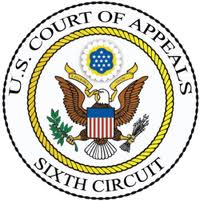 On Nov. 3, six advocacy groups representing the interests of workers and plaintiffs’ class action lawyers filed an amicus brief with the U.S. Supreme Court in Mach Mining v. EEOC, No. 13-1019. A copy is here.
On Nov. 3, six advocacy groups representing the interests of workers and plaintiffs’ class action lawyers filed an amicus brief with the U.S. Supreme Court in Mach Mining v. EEOC, No. 13-1019. A copy is here.
Authored by the Civil Rights Clinic of the Dickinson School of Law and The Impact Fund, the amicus brief represents the collective views of multiple public interest organizations, including the National Employment Lawyers Association, The Impact Fund, the American Association of Retired Person, the Asian Americans Advancing Justice-Asian Law Caucus, Disability Rights California and Public Counsel.
The amicus brief was filed in support of the U.S. Equal Employment Opportunity Commission, which filed its Reply Brief with the SCOTUS on Oct. 27, 2014. In supporting the government’s position, the amicus asserted that the brief represents the “perspective of the victims of workplace discrimination whom Title VII is intended to protect.”
Given the importance of this case and the issue presented, the new amicus brief is well worth a read by employers.
The Context and the Stakes
Mach Mining v. EEOC is a big case for employers and for government enforcement litigation. In a game-changing decision in December 2013, the U.S. Court of Appeals for the Seventh Circuit ruled that an alleged failure to conciliate is not an affirmative defense to the merits of an employment discrimination suit brought by the EEOC.
That decision had far-reaching, real world significance to the employment community, for it means the EEOC is virtually immune from review in terms of the settlement positions it takes prior to suing employers: “pay millions or we will sue and announce it in a media release.”
We have blogged on this case at various points before, as the litigation winded through the lower courts and culminated in the precedent-setting decision of the Seventh Circuit reported at 738 F.3d 171 (7th Cir. 2013). Readers can find the previous posts here and here and here.
In essence, the Seventh Circuit determined that the EEOC’s pre-lawsuit conduct in the context of conciliation activities cannot be judicially reviewed. Subsequently, in what many SCOTUS watchers found ironic, even though the EEOC prevailed in the Seventh Circuit, the Government also backed Mach Mining’s request for SCOTUS review to resolve the disagreement among the courts of appeals regarding the EEOC’s conciliation obligations. Given the stakes, the SCOTUS accepted Mach Mining’s petition for certiorari in short order to resolve this issue.
Amicus Briefs for the Defense
Employer groups have lined up behind Mach Mining to support reversal of the Seventh Circuit’s decision. Seyfarth Shaw LLP submitted an amicus brief to the U.S. Supreme Court on behalf of the American Insurance Association in Mach Mining. For blog readers interested in our amicus brief, a copy is here.
Amicus Brief Filed In Support of the EEOC
The amicus submission to the Supreme Court asserts that interpreting Title VII to allow judicial review of conciliation efforts by the EEOC would harm alleged victims of discrimination by violating the mandate of the statute that conciliation remain confidential. Judicial review, the amicus brief asserts, would chill full and frank settlement discussions; expose sensitive information about pre-lawsuit negotiations to the public, and hurt the cases of allegedly injured workers because federal judges might be potentially influenced by irrelevant settlement communications. The amicus brief also argues that if the SCOTUS interprets the statute to allow judicial review of pre-lawsuit conciliation efforts by the EEOC, dismissal is an overly harsh remedy where those efforts are determined to be inadequate (and instead the parties should be ordered to engage in further settlement negotiations).
The point of the amicus brief about compromising the impartiality of federal judges—by exposing the court to settlement discussions in conciliation—is somewhat surprising. Federal judges conduct mediations and settlement conferences as a matter of course, and are “exposed” to settlement discussions routinely.
Next Up on the Docket
Mach Mining’s answering brief is due on Nov. 26, 2014, and then the SCOTUS will set the case for oral argument for January 2015. We will keep our readers updated as developments occur in this litigation.
This post was previously published on the Seyfarth Shaw website here.


